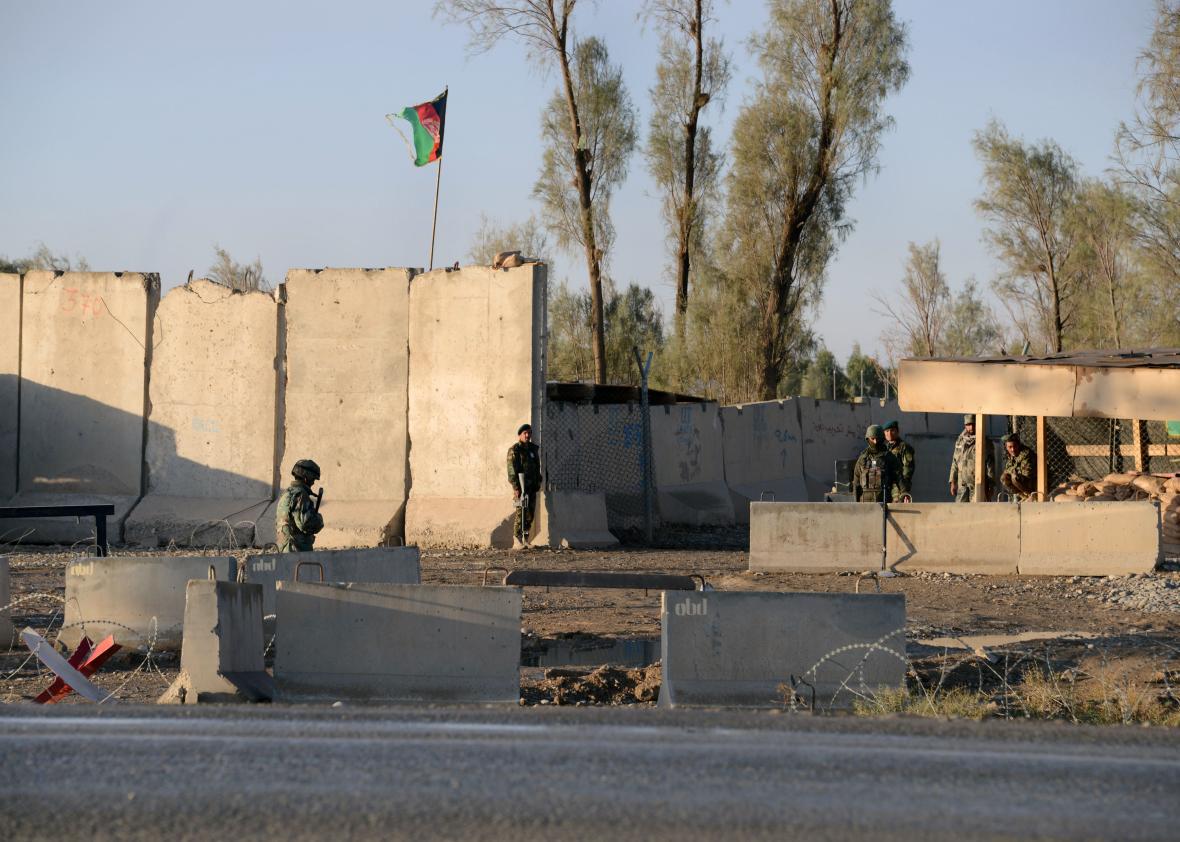At least 37 people were killed in a day-long Taliban siege on a heavily fortified airfield near Kandahar, Afghanistan on Wednesday. Several hostages were also taken, but have apparently now been freed. The attackers, armed with suicide vests, rocket-propelled grenade launchers, and automatic rifles, never managed to breach the compound, where around 2,000 U.S. troops are stationed, but fought fierce battles with Afghan forces, on their heels after a series of attacks including the brief occupation of the city of Kunduz in September.
President Obama announced in October that the U.S. will keep its current troop level of 9,800 in Afghanistan at least through next year. The New York Times reports that the Taliban directly, if somewhat ineptly, made clear that Wednesday’s attack was a message to the president:
On their website, the Taliban posted a video message of the attackers wearing white robes and sitting in front of the Taliban flag. They also posted a picture of the 10 men dressed in what looked like United States military uniforms.
“It is my suggestion from Obama: Obama, you are not safe in Afghanistan,” one of the attackers said in broken English, brandishing a knife. His two colleagues seated next to him could not restrain their chuckles, seemingly at his grammatical mistakes. “When you are go anywhere, we will kill them there. We will finish your technology and kill your power.”
ESL issues aside, the Taliban has been regaining territory at an alarming rate. According to Long War Journal, it now controls 37 districts in Afghanistan, 15 of them seized in just the last two months, including one yesterday.
But this expansion is coming at a time when the group is both fractured and threatened from the outside. In the past few weeks, there have been deadly internal clashes between Taliban factions fighting over the appointment of new leader Mullah Akhtar Mansoor. Mansoor officially took over in June after the death of longtime supreme leader Mullah Mohammed Omar was announced, though it’s likely he had been running the show for a while as Omar had either been already dead or incapacitated for years. That transition disrupted ongoing peace talks between the Taliban and the Afghan government, which Mansoor had supported, supposedly with Omar’s blessing, but are opposed by many members of the group. There were rumors Mansoor had been killed in an internal gunfight earlier this month, but the Afghan government believes that’s not the case.
As the group splits, the new arrival in Afghanistan’s conflict, ISIS, is taking advantage. The Afghan government claims that ISIS is stealing fighters away from the Taliban, even in its southern heartland. ISIS recently released a video accusing the Taliban’s leaders of straying from the righteous path and working with Pakistan’s spy agency, the ISI.
So while from one perspective, the Taliban is gaining strength at an alarming rate, from another, it’s never been more vulnerable. For the Afghan government and a U.S. administration that wants to pull troops out of the country as fast as possible, it’s bad news either way: multiple insurgent groups without any central leadership will probably be even more difficult to defeat.
